As someone who’s been knee-deep in the plastics industry for over a decade, working on everything from material selection to injection molding troubleshooting, I’ve fielded plenty of questions about combining different polymers. One topic that often sparks curiosity among manufacturers, designers, and engineers is what happens when you mix thermoplastic elastomer (TPE) and polypropylene (PP) in a product or process. It’s a valid concern—both materials are widely used for their unique properties, but blending them isn’t as simple as tossing ingredients into a recipe. In this article, I’ll share my insights from years of testing, consulting, and problem-solving to explain the outcomes of mixing TPE and PP, the challenges involved, and how to approach their combined use effectively.
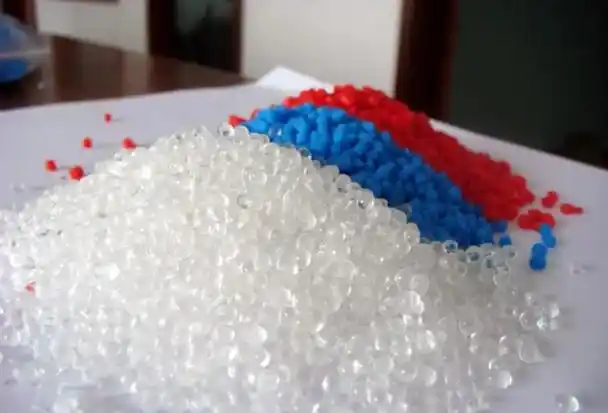
What Are TPE and PP, and Why Mix Them?
Before diving into the results of mixing these materials, let’s get clear on what they are and why someone might want to combine them.
Thermoplastic Elastomer (TPE)
TPEs are a family of flexible, rubber-like polymers that combine the elasticity of rubber with the processability of plastics. Common types include styrenic block copolymers (SBCs), thermoplastic polyurethanes (TPU), and thermoplastic vulcanizates (TPV). TPEs are prized for their soft-touch feel, flexibility, and resilience, making them ideal for applications like grips, seals, medical tubing, and wearable bands. They’re often processed via injection molding or extrusion and can be overmolded onto rigid plastics.
Polypropylene (PP)
PP is a versatile, rigid thermoplastic known for its strength, chemical resistance, and low cost. It’s a go-to material for automotive parts, packaging, household goods, and medical devices. PP comes in various grades, like homopolymers (stiffer) and copolymers (more flexible), and is processed through injection molding, blow molding, or extrusion. Its high melting point (around 160–170°C) and durability make it a workhorse in manufacturing.

Why Mix TPE and PP?
The idea of mixing TPE and PP often arises in scenarios like:
Overmolding: Bonding a soft TPE layer onto a rigid PP substrate for a soft-touch grip or ergonomic handle.
Blending: Combining TPE and PP pellets to create a hybrid material with balanced properties.
Co-Extrusion: Processing both materials together to form multi-layered products, like tubing or seals.
Recycling: Mixing scrap TPE and PP during reprocessing to reduce waste.
I once worked with a client designing a PP tool handle with a TPE grip. They wanted to know if the materials could be blended or if overmolding was the only option. This project, among others, taught me that mixing TPE and PP requires careful consideration of their compatibility and processing behavior.
What Happens When TPE and PP Are Mixed?
The outcome of mixing TPE and PP depends on how they’re combined—whether through physical blending, overmolding, co-extrusion, or recycling. Let’s explore each scenario and the results I’ve observed in practice.
1. Physical Blending (Mixing Pellets)
When TPE and PP pellets are mixed and melted together in a single process (e.g., injection molding), the results are often unpredictable and suboptimal. Here’s why:
Immiscibility: TPE and PP are generally incompatible polymers due to differences in their chemical structures and polarity. TPEs (especially SBCs or TPUs) are often polar or elastomeric, while PP is non-polar and crystalline. This leads to phase separation, where the materials don’t blend homogeneously, resulting in a weak, heterogeneous material.
Poor Mechanical Properties: The blend may exhibit reduced strength, brittleness, or delamination because the TPE and PP don’t form strong intermolecular bonds. For example, a 50/50 TPE-PP blend might crack under stress or show visible swirls on the surface.
Inconsistent Appearance: The part may have streaks, color variations, or cloudy patches due to poor mixing. I’ve seen blended parts look like a marbled mess, which is unacceptable for most applications.
Processing Challenges: TPE and PP have different melt temperatures (TPE: 180–220°C; PP: 200–250°C) and viscosities, making it hard to achieve uniform flow. This can cause burn marks, warping, or incomplete filling in the mold.
In one case, a client tried blending TPV and PP to create a flexible automotive seal. The result was a brittle, streaky part that failed durability tests. We switched to overmolding to achieve the desired properties.
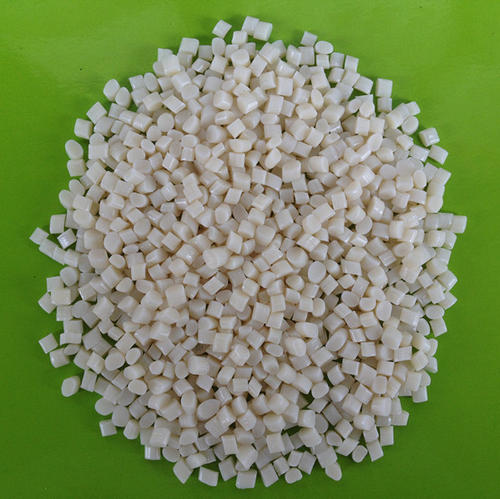
2. Overmolding TPE onto PP
Overmolding—molding a soft TPE layer onto a rigid PP substrate—is a common and successful way to combine these materials. The results are generally positive if done correctly:
Strong Bond with Preparation: TPE can bond well to PP through mechanical interlocking or chemical adhesion, especially with TPV or SBC-based TPEs formulated for PP compatibility. Surface treatments like texturing the PP or using adhesion promoters enhance the bond.
Enhanced Functionality: The combination offers rigidity from PP and flexibility from TPE, ideal for handles, grips, or seals. For example, a PP tool body with a TPE grip provides strength and comfort.
Aesthetic Appeal: Overmolding creates a seamless, professional finish, with the TPE adding a soft-touch feel and the PP providing structural integrity.
Challenges: Without proper material selection or mold design, the TPE may peel off or delaminate. TPVs are often the best choice for PP overmolding due to their PP-based matrix, which improves compatibility.
I helped a manufacturer produce PP water bottles with TPE lids. By using a TPV grade optimized for PP and texturing the PP surface, we achieved a durable bond that withstood repeated use and dishwashing.
3. Co-Extrusion of TPE and PP
Co-extrusion involves processing TPE and PP simultaneously to create multi-layered products, like tubing or weatherstripping. The results can be effective but require precise control:
Layered Structure: The materials form distinct layers, with TPE providing flexibility and PP adding strength or chemical resistance. For example, a TPE-PP tube might have a soft inner layer and a rigid outer layer.
Good Adhesion with Compatibilizers: Using compatibilizing agents (e.g., maleic anhydride-grafted PP) or tie layers ensures the TPE and PP stick together. Without these, the layers may separate.
Processing Complexity: Co-extrusion requires dual extruders with synchronized melt temperatures and flow rates. Mismatches can cause delamination or uneven layers.
Applications: This method is common for automotive seals, medical tubing, or construction profiles.
A client producing TPE-PP weatherstripping struggled with layer separation until we introduced a compatibilizer and adjusted the extruder settings, resulting in a durable, flexible product.

4. Recycling Mixed TPE and PP
Mixing TPE and PP scraps during recycling is common to reduce waste, but the results are often problematic:
Reduced Material Quality: Recycled blends of TPE and PP have inconsistent properties, like lower strength, poor elasticity, or brittleness, due to their immiscibility.
Limited Applications: The recycled mix is suitable only for low-performance products, like non-critical molded parts or fillers, not high-quality components.
Processing Issues: The blend may cause clogging or degradation in the extruder if the TPE and PP have different melt behaviors.
Sorting Challenges: Separating TPE and PP scraps is difficult, as they have similar densities. Manual sorting or infrared spectroscopy is often needed.
A recycling facility I consulted for tried reprocessing TPE-PP scraps from automotive parts. The resulting material was too brittle for reuse in high-value applications, so they used it for low-grade spacers instead.
Challenges of Mixing TPE and PP
Combining TPE and PP comes with several hurdles, which I’ve seen trip up even experienced manufacturers:
Material Incompatibility: Their chemical differences lead to weak bonds or phase separation in blends, requiring compatibilizers or specialized TPE grades.
Processing Mismatch: Different melt temperatures, viscosities, and cooling rates complicate molding or extrusion, causing defects like warping or burn marks.
Cost of Optimization: Developing a reliable process—whether through compatibilizers, surface treatments, or mold redesign—adds time and expense.
Performance Trade-Offs: Blends often sacrifice the elasticity of TPE or the strength of PP, limiting their use in demanding applications.
Recycling Difficulties: Mixed TPE and PP scraps are hard to reprocess into high-quality materials, reducing their sustainability value.

How to Successfully Combine TPE and PP
Based on my experience, here are practical steps to achieve the best results when mixing TPE and PP:
1. Choose Compatible Materials
Select a TPE grade designed for PP compatibility, like TPV or SBC-based TPEs with a PP matrix. Suppliers like Kraton, Teknor Apex, or Elastron offer TPEs optimized for PP overmolding or blending.
Use PP grades with consistent melt flow indices (MFI) to match the TPE’s processing behavior. Copolymer PP often bonds better than homopolymer PP.
Request adhesion test data from your TPE supplier to confirm compatibility with your PP grade.
2. Optimize for Overmolding
Texture the PP Surface: Create a rough or micro-etched surface on the PP part to enhance mechanical interlocking with the TPE.
Use Adhesion Promoters: Apply primers or plasma treatment to increase the PP’s surface energy, improving TPE bonding.
Control Mold Temperatures: Keep the PP substrate at 40–60°C and the TPE at 20–40°C to promote adhesion without warping.
Design for Bonding: Incorporate undercuts or interlocking features in the mold to strengthen the TPE-PP interface.

3. Use Compatibilizers for Blending or Co-Extrusion
Add maleic anhydride-grafted PP or ethylene-based compatibilizers to improve TPE-PP miscibility in blends or co-extruded layers. These create chemical bridges between the polymers.
Work with your supplier to determine the compatibilizer dosage (typically 2–5% by weight) for your application.
Test the blend’s mechanical properties (e.g., tensile strength, elongation) to ensure it meets requirements.
4. Fine-Tune Processing Parameters
Match Melt Temperatures: Set the TPE barrel at 180–220°C and the PP barrel at 200–250°C, adjusting to avoid degradation or poor flow.
Control Injection Speed: Use moderate speeds to prevent shear heating or trapped air, which can cause surface defects.
Optimize Cooling: Ensure uniform cooling to avoid warping or residual stresses at the TPE-PP interface.
Monitor Back Pressure: Use 50–100 bar to improve material mixing and reduce gas bubbles.
5. Test Extensively
Conduct peel tests (e.g., ASTM D903) for overmolded parts to verify bond strength.
Perform tensile and impact tests on blends to assess mechanical performance.
Simulate environmental conditions—heat, humidity, UV, or chemicals—to ensure long-term durability.
Test with multiple batches to account for material variations.
6. Plan for Recycling
Segregate Scraps: Use infrared sorting or manual separation to keep TPE and PP scraps apart for higher-quality recycling.
Use Compatibilizers in Regrind: Add compatibilizers to recycled blends to improve processability and properties.
Limit Regrind Use: Restrict mixed TPE-PP regrind to low-performance applications to avoid quality issues.
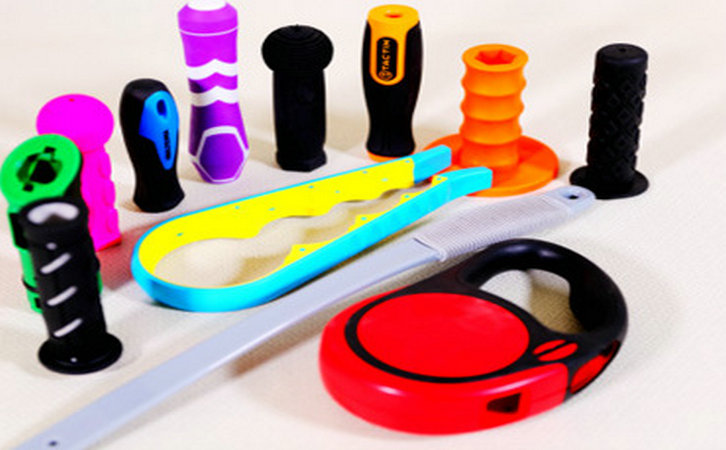
Comparison Table of TPE and PP Mixing Methods
Here’s a table summarizing the methods of combining TPE and PP and their outcomes:
|
Method |
Description |
Benefits |
Challenges |
|---|---|---|---|
|
Physical Blending |
Mixing TPE and PP pellets for molding |
Cost-effective, single process |
Poor compatibility, weak properties |
|
Overmolding |
Molding TPE onto PP substrate |
Strong bond, enhanced functionality |
Requires compatible TPE, surface prep |
|
Co-Extrusion |
Forming multi-layered TPE-PP products |
Layered properties, durable |
Needs compatibilizers, complex setup |
|
Recycling |
Reprocessing TPE-PP scraps |
Reduces waste, cost-saving |
Inconsistent quality, sorting difficulties |
This table provides a quick overview, but let’s look at how these methods play out in real-world applications.
Real-World Examples of TPE and PP Combinations
I’ve worked with clients across industries combining TPE and PP. Here are two examples:
Automotive Dashboard Grip: A manufacturer overmolded TPV onto a PP dashboard panel to create a soft-touch grip. Initial attempts failed due to peeling, but texturing the PP surface and using a TPV grade optimized for PP resulted in a durable bond that passed 80°C heat tests. The part combined PP’s rigidity with TPE’s comfort, enhancing the vehicle’s interior.
Recycled Consumer Goods: A factory tried blending TPE-PP scraps from household containers to produce low-cost storage bins. The blend was brittle and streaky, failing impact tests. Adding a compatibilizer and limiting regrind to 20% improved toughness, but the material was still only suitable for non-critical parts.
These cases highlight that overmolding is often the best approach, while blending or recycling requires careful optimization.
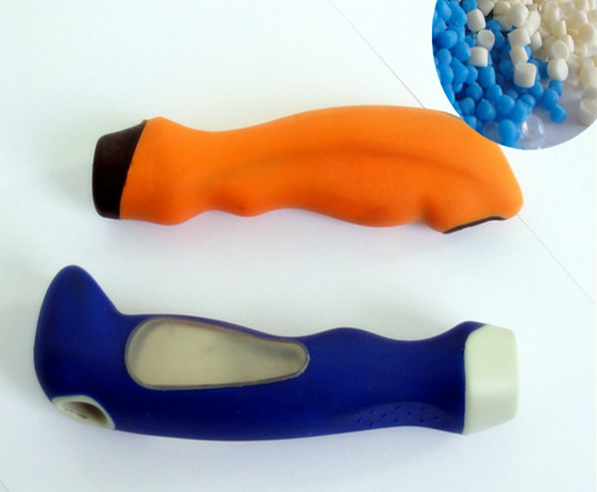
Challenges and Considerations
Combining TPE and PP isn’t without hurdles, which I’ve seen challenge even seasoned manufacturers:
Material Selection: Finding a TPE grade compatible with your PP can be trial-and-error without supplier data.
Process Optimization: Balancing melt temperatures, speeds, and cooling takes time and testing, delaying production.
Cost Implications: Compatibilizers, surface treatments, or specialized TPEs increase material and processing costs.
Performance Trade-Offs: Blends often compromise elasticity or strength, limiting their use in high-performance applications.
Sustainability Challenges: Mixed TPE-PP scraps are hard to recycle into high-value products, reducing their environmental benefit.
The Bigger Picture: Why Mixing TPE and PP Matters
Getting TPE and PP to work together is about more than technical feasibility—it’s about creating functional, cost-effective, and user-friendly products. A well-executed combination, like a TPE-overmolded PP handle, can enhance ergonomics, durability, and market appeal. On the flip side, a poorly managed mix can lead to defective parts, production delays, or customer dissatisfaction.
I’ve seen how solving these challenges can transform a project. A client making TPE-PP medical device casings went from frequent delamination to a reliable product after switching to a compatible TPV and optimizing their mold design. It’s a reminder that material synergy drives innovation and quality.
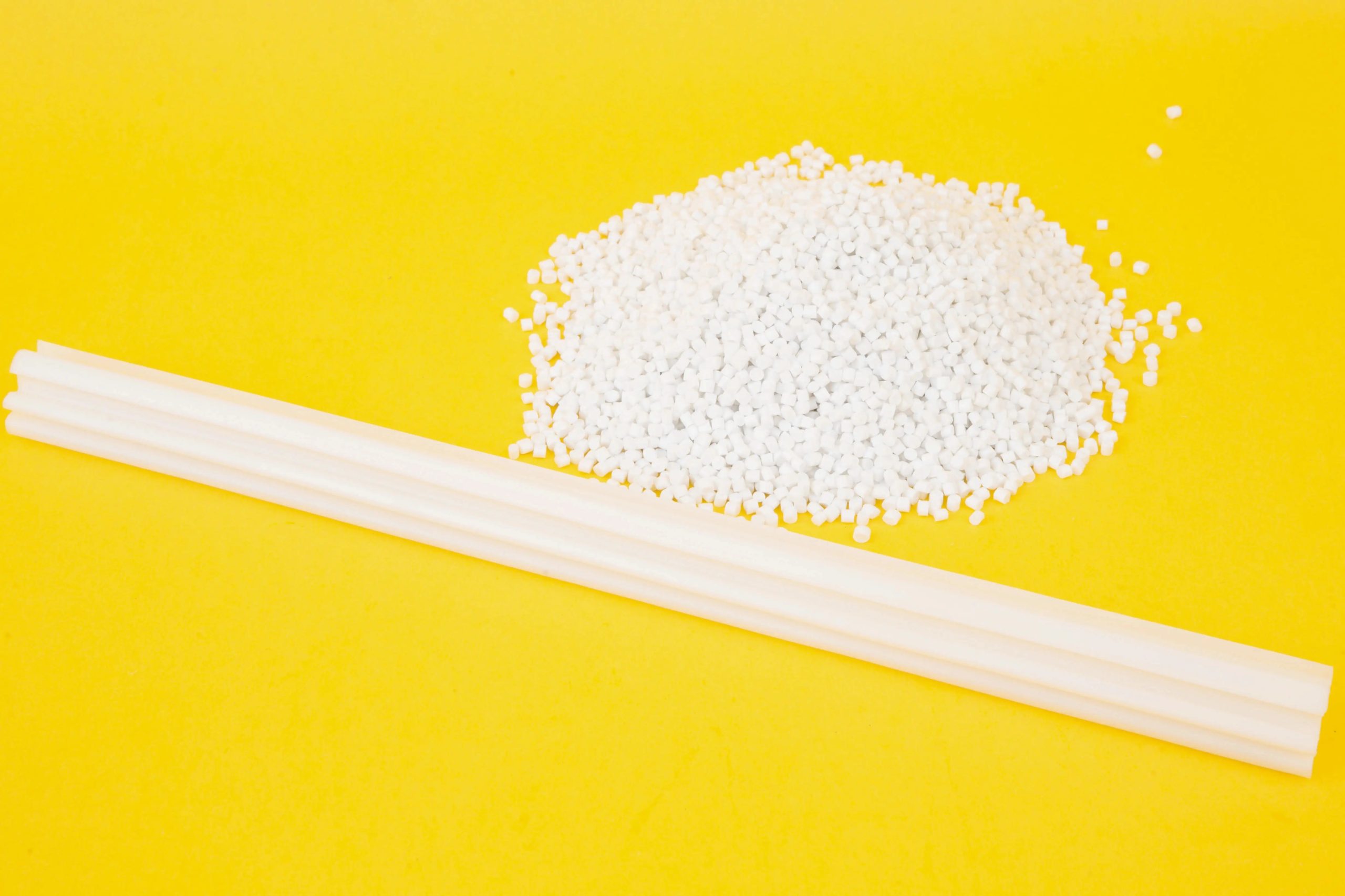
Future Trends in TPE and PP Combinations
The industry is evolving to make TPE-PP combinations easier and more effective. Advanced TPE formulations with built-in PP compatibility are reducing the need for compatibilizers. Smart molding machines with real-time sensors are improving process control, minimizing defects. I recently spoke with a material supplier developing bio-based TPEs and PPs that bond better, aligning with sustainability goals.
Recycling technologies, like chemical recycling or advanced sorting, are also improving the quality of mixed TPE-PP regrind, making it viable for higher-value applications. These advancements are exciting and promise to simplify the use of TPE and PP together.
Final Thoughts
Mixing TPE and PP can yield fantastic results when done thoughtfully, especially through overmolding or co-extrusion, where the materials complement each other’s strengths. Physical blending or recycling, however, often leads to poor performance unless compatibilizers and careful processing are used. By selecting compatible materials, optimizing processes, and testing thoroughly, you can create products that combine TPE’s flexibility with PP’s strength for applications ranging from automotive to consumer goods.
From my years in the industry, I’ve learned that success with TPE and PP comes down to preparation and collaboration. Work closely with your material suppliers, invest in testing, and don’t shy away from process tweaks or compatibilizers. Whether you’re designing a soft-touch handle or recycling scraps, the right approach will ensure your project meets performance, cost, and sustainability goals.
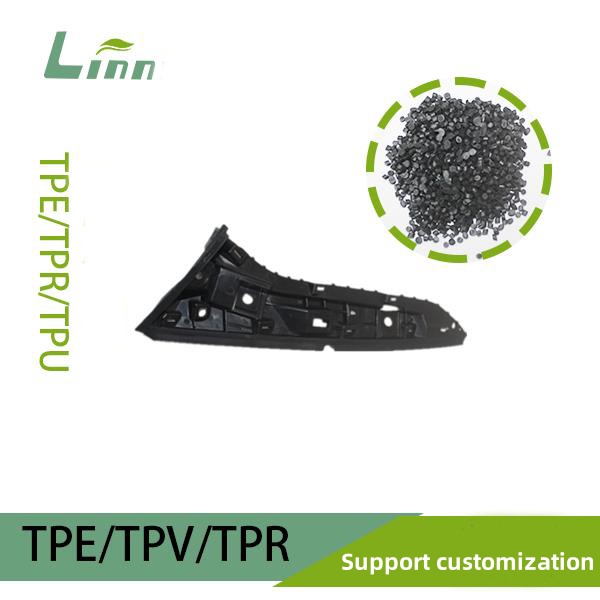
Related Questions and Answers
Q: Can I blend TPE and PP without compatibilizers?
A: It’s possible, but the blend will likely be weak, brittle, or streaky due to immiscibility. Using a compatibilizer like maleic anhydride-grafted PP greatly improves mechanical properties.
Q: What’s the best TPE type for overmolding onto PP?
A: TPV or SBC-based TPEs with a PP matrix are ideal, as they bond well to PP. Suppliers like Kraton or Teknor Apex offer grades optimized for PP overmolding.
Q: How do I test if my TPE-PP bond is strong enough?
A: Perform peel tests (e.g., ASTM D903) for overmolded parts and tensile/impact tests for blends. Simulate environmental conditions like heat or humidity to ensure durability.
Q: Is it cost-effective to recycle mixed TPE and PP scraps?
A: It depends. Mixed regrind is suitable for low-performance parts, but sorting or compatibilizers add cost. Chemical recycling may improve quality but is still emerging.





